On June 27, the National Assembly passed a Resolution on the investment policy of the Quy Nhon-Pleiku expressway project. This information immediately spread throughout the world, first of all to shipping lines, global trade networks... This is because the expressway will bring a large economic region from Northeast Cambodia-Thailand, Southern Laos and the Central Highlands closer and faster to the international market through ports in the Quy Nhon area. And Quy Nhon port, the oldest port in this area, is under the observation of many agencies, units and businesses.
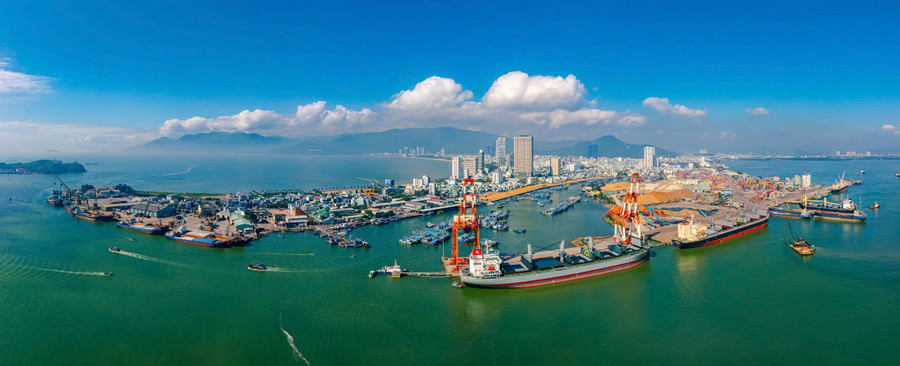
1. According to the Government's proposal, the above expressway is about 125 km long, with a scale of 4 lanes, the starting point connects with National Highway 19B (Binh Dinh ward) and the end point connects with Ho Chi Minh road (section through Pleiku ward). The project has a total investment of more than 43,000 billion VND, expected to be implemented in 2025 and completed and put into operation in 2029. When put into operation, the expressway will shorten the travel time from Quy Nhon center to Pleiku from about 4 hours to 2 hours, while overcoming difficulties and potential dangers when traveling through An Khe and Mang Yang passes.
FreightAmigo, a digital logistics platform that specializes in providing online freight booking services, commented: Improving road and rail connections to Quy Nhon port is very important, it helps improve efficiency, increases its attractiveness to shipping lines, and helps this port share a part of the goods that are still concentrated at major ports such as in Ho Chi Minh City and Hai Phong .
Similarly, Global Highways—a UK-based international infrastructure news website—commented that the Quy Nhon-Pleiku expressway is part of a strategy to expand expressway infrastructure to increase regional connectivity and promote cross-border trade, especially in the Greater Mekong Subregion (GMS).
In fact, in recent years, the World Bank (WB), the Asian Development Bank (ADB), and the Japan International Cooperation Agency (JICA) have carried out many research projects and provided government-level advice on the issue of accelerating the flow of goods from the Central Highlands to Quy Nhon by upgrading the existing National Highway 19 and building a highway. International experts and logistics companies highly appreciate the investment in building a highway because it will help accelerate transportation, balance trade between major ports, and expand the scope of exploitation for Quy Nhon port.
In particular, experts from shipping lines such as Maersk, Evergreen, Samudera highly appreciate the impact of the expressway on Quy Nhon port. Moreover, it is possible to maximize the potential of seaports in the Quy Nhon area. In the Quy Nhon port area, there are currently 6 international shipping lines operating and providing regular services - PIL, Evergreen, Maersk, Samudera, CNC Line, Interasia. And these enterprises have received information about the Quy Nhon-Pleiku expressway project very positively.
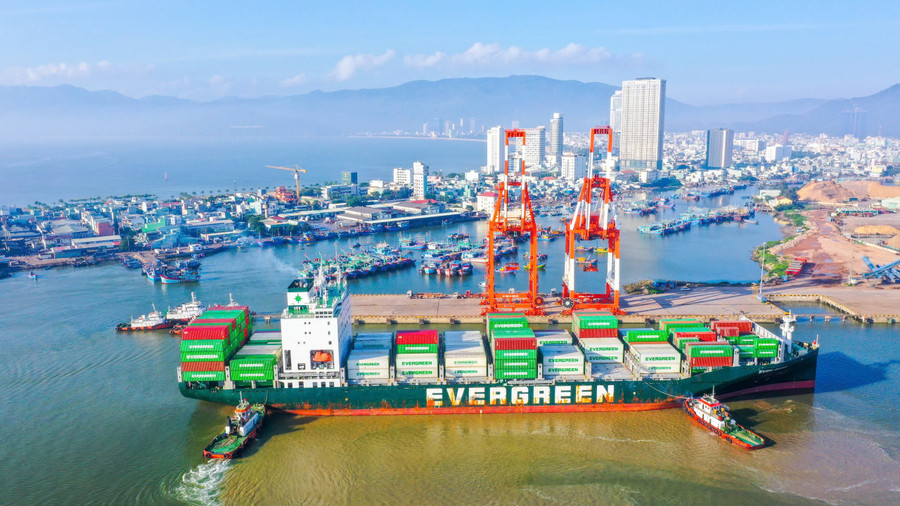
2. Since ancient times, the Asian maritime trade, especially the Southeast Asian region, has had an extremely important position - an intermediary point connecting the East and Northeast Asian markets with the South and West Asian markets. The most prominent in the system of connecting commercial ports are Thi Nai port (10th - 15th century), Nuoc Man port (17th - 18th century). Immediately after occupying Vietnam, the French colonialists forced the Hue court to open Thi Nai port (Quy Nhon), Ninh Hai port (Hai Phong), Hanoi citadel and the Red River for foreigners to trade.
The location and quite special role of Thi Nai trading port (Thi Ly Bi Nai, Tan Chau...) were recorded quite a lot in ancient documents of Dai Viet and China. Kinh The Dai Dien Tu Luc wrote about Thi Nai port - "the port gate in the North is connected to the sea, next to it are 5 small ports connecting to Dai Chau of that country, the Southeast has mountains blocking, the West has wooden walls". Dai Viet Su Ky Toan Thu wrote about this trading port: "Tỳ Ni is the port of Champa, where merchant ships gather... this place is a complex gathering of merchants, and it is also an important wharf". During the Ming Dynasty, the book Doanh Nhai Thang Lam wrote: "Champa has a sea gate called Tan Chau, the shore also has a stone tower as a landmark, when boats arrive there they tie up, there is a camp called Thiet Ti Nai".
Thi Nai commercial port of the Champa Kingdom became a familiar destination for merchant ships on the regional trade route, an inter-regional center, connecting major regional and international commercial centers.
3. Since the beginning of the 17th century, the port of Nuoc Man attracted many foreign merchants and missionaries. Borri, a priest who came to Dang Trong in 1618, commented: Dang Trong at that time had more than 60 seaports, the most bustling was Hoi An, the second most important were Cua Han and Nuoc Man. Nuoc Man port not only traded with the major ports of Dang Trong: Thanh Ha, Da Nang, Hoi An, Cam Ranh, Gia Dinh, but also had international shipping routes to Vuconva, Luzon (Philippines), Malacca (Malaysia), Macau (China).
According to Le Quy Don's Phu Bien Tap Luc, under the Nguyen Lords, Quy Nhon was the prefecture with the largest number of transport boats in Dang Trong. With the number of transport boats being larger than other prefectures and districts, it showed the excitement in the trade of transporting goods by water as well as the prosperity of Quy Nhon's commercial port at that time.
Pierre Poivre highly appreciated the role of Nuoc Man: “In Quy Nhon province, there is another commercial port called Nuoc Man, a good and safe port frequented by many merchants, but inferior to FaiFo”. PB Lafont wrote: “In the 17th-18th centuries, compared to other ports in Dang Trong, only Bi Nai and Cam Ranh ports had Western and Malaysian merchant ships, and some other countries came to trade more frequently”. Comments from Western merchants and researchers show that they highly appreciated the role of Thi Nai-Nuoc Man port in the Dai Viet commercial port system at that time.
4. In the early 19th century, many Chinese merchants appeared at Quy Nhon port. They were merchants and boat people from the provinces of Guangdong, Fujian, Hainan... and the trading process took place increasingly strongly in the 40s of the 19th century. According to incomplete statistics in the Nguyen Dynasty's Chau Ban, there were 46 Chinese merchant ships arriving at Thi Nai from 1825 to 1851. Documents recorded about Binh Dinh all acknowledge: Since the Minh Mang period (1820-1841), Quy Nhon was a large and international trading port, especially in trade activities between China and our country.
The French soon realized the important position of Thi Nai port, especially when carrying out colonial exploitation in the Central region, the Central Highlands and Indochina. In 1876, the French officially opened the Quy Nhon port, opening a period of trade exchange with Western European countries and the Southeast Asian region. The system of wharves, warehouses, and lighthouses was built by the French and the channels were regularly dredged and beacons were placed to guide ships into the port.
In 1929, the Indochina Government established the Inspection générale des travaux publics (Port Rectification Team, General Inspector of Public Works) to survey, research, evaluate and propose solutions to improve port channels. Accordingly, in order for large-tonnage ships to enter deep into Thi Nai lagoon, Quy Nhon port was surveyed, planned and designed for renovation and upgrading in 1930 with the following items: Construction of breakwaters, piers, warehouses, creation of mooring areas, establishment of railways, dredging and blasting rocks to widen the port channel for ships with a draft of 7.5 m, this investment was 1.5 million VND - at that time a huge investment. Today, Quy Nhon port is one of the 10 largest seaports in Vietnam, with the volume of goods passing through the port continuously growing rapidly and stably over the past decades.
***
Vietnam is located at the intersection of vital trade routes between the Indian Ocean and the Pacific Ocean, between Europe, the Middle East and China, Japan and countries in the Southeast Asian region. In that context, ports in the Quy Nhon area, with the core driving force being Quy Nhon port, play an important connecting role.
With the merger of the two provinces of Gia Lai (old) and Binh Dinh into Gia Lai province, the marine economy will have many favorable conditions to develop and become the spearhead economic sector of the locality. Along with information about the Quy Nhon-Pleiku expressway project, the recent major projects that Binh Dinh province has attracted have further motivated Gia Lai province to become an attractive destination for domestic and international investors. And thus, the ports in the Quy Nhon area are even more attractive to shipping lines around the world.
Source: https://baogialai.com.vn/cang-quy-nhon-giu-vai-tro-cau-noi-quan-trong-post560283.html







![[Photo] Cat Ba - Green island paradise](/_next/image?url=https%3A%2F%2Fvphoto.vietnam.vn%2Fthumb%2F1200x675%2Fvietnam%2Fresource%2FIMAGE%2F2025%2F12%2F04%2F1764821844074_ndo_br_1-dcbthienduongxanh638-jpg.webp&w=3840&q=75)
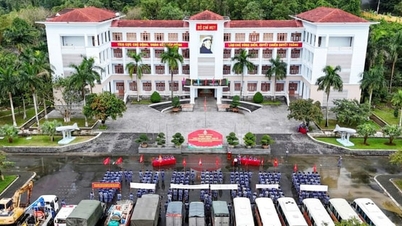




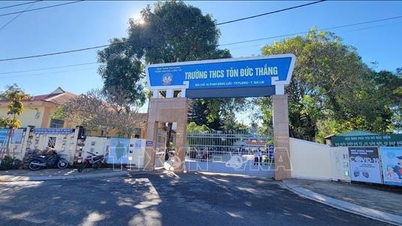



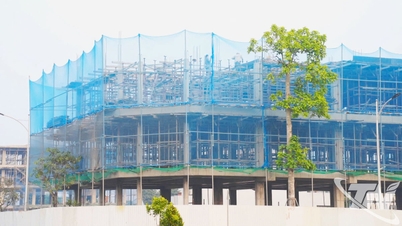


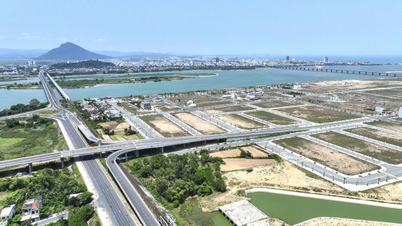











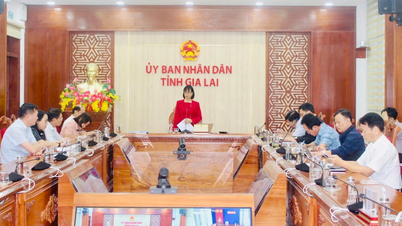





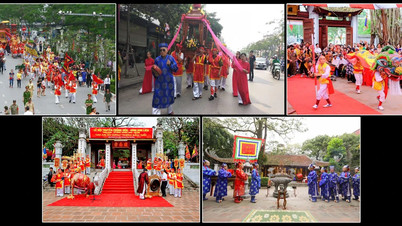



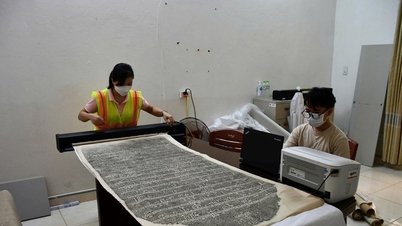









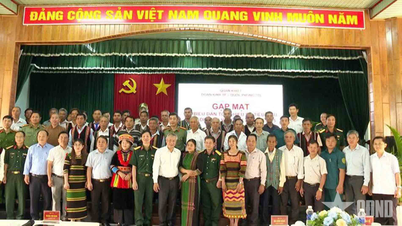








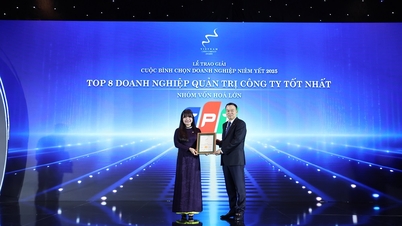



![[VIMC 40 days of lightning speed] Da Nang Port: Unity - Lightning speed - Breakthrough to the finish line](https://vphoto.vietnam.vn/thumb/402x226/vietnam/resource/IMAGE/2025/12/04/1764833540882_cdn_4-12-25.jpeg)

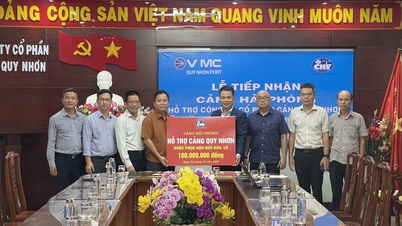








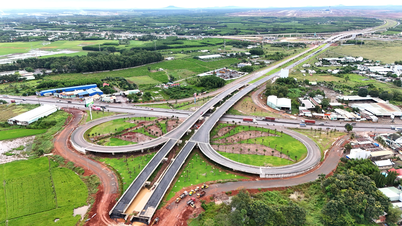




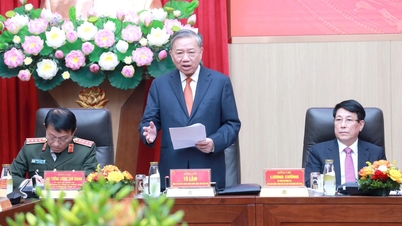





























Comment (0)